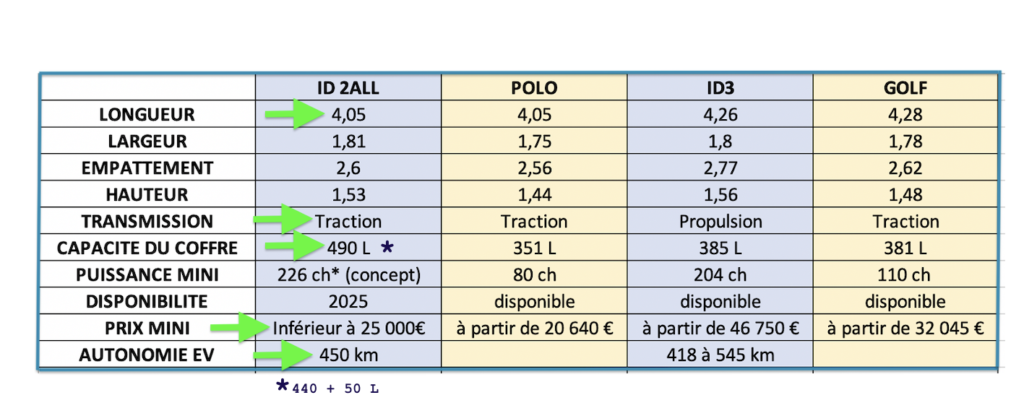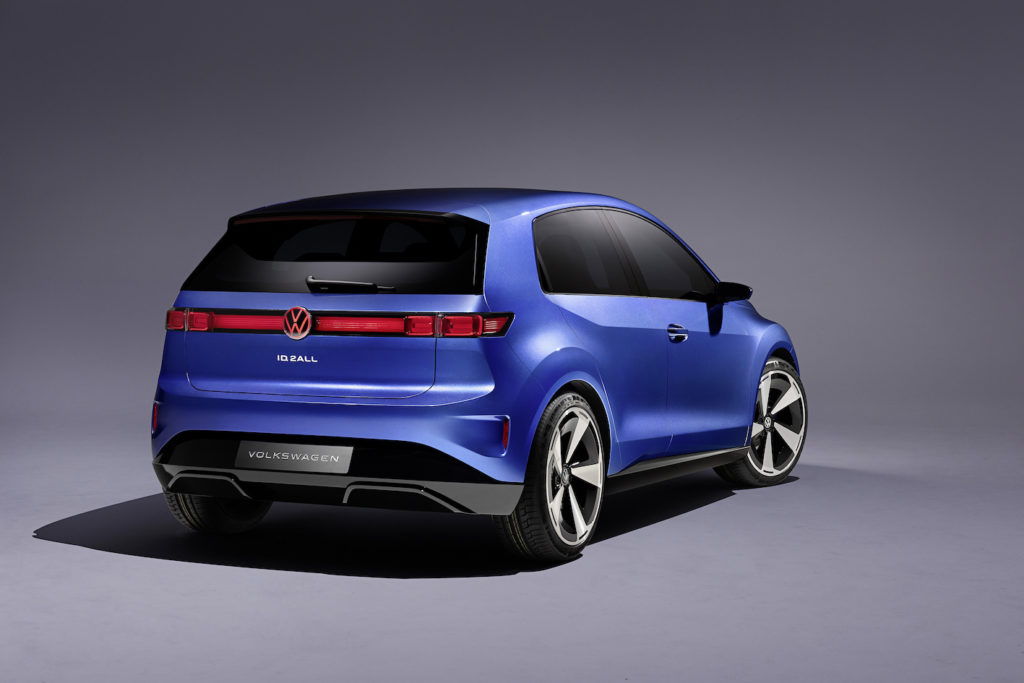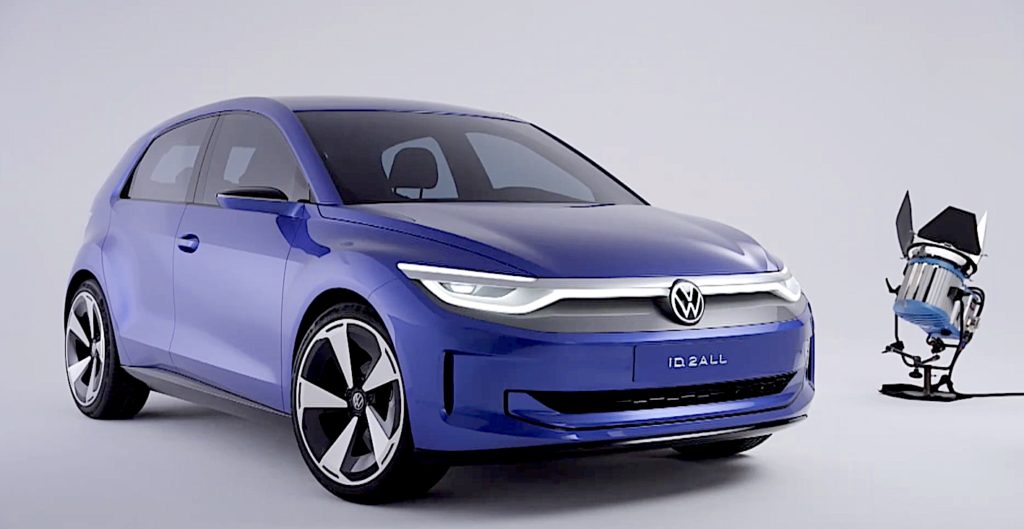
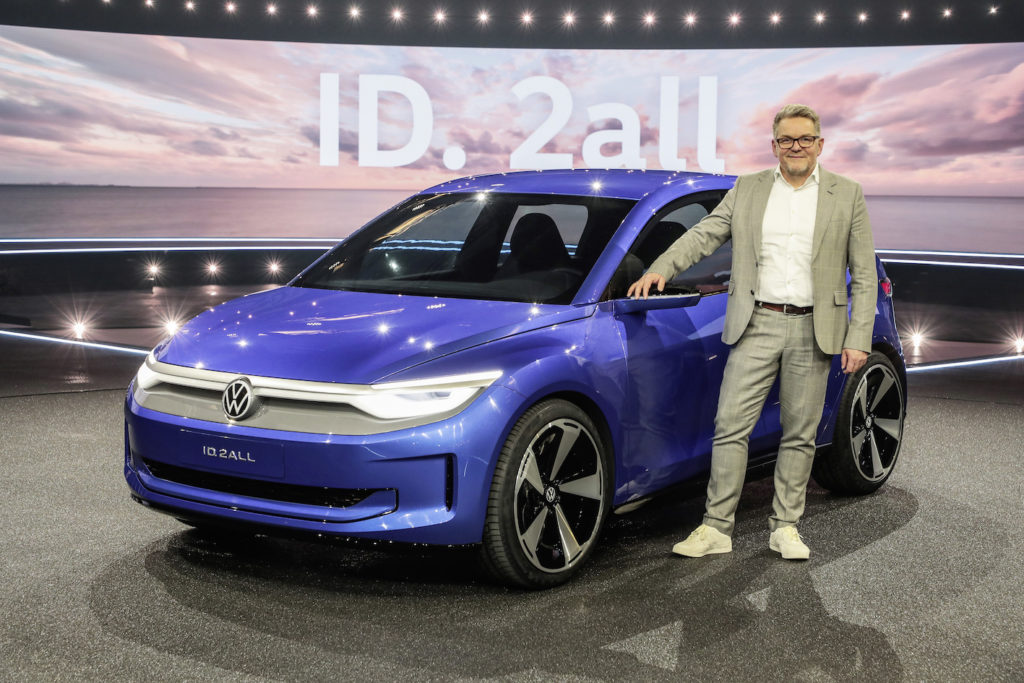
A new design director often has to wait several months, or even two or three years, before his or her own vision of a brand’s design becomes reality. This will be the case for Andreas Mindt (above), Volkswagen’s new head of design, who took over in February 2023, i.e. last month. In other words, this former Bentley design boss has little to do with the new design language of this future “little” VW, which is probably due more to the team of Jozef Kaban, the brand’s previous design director.
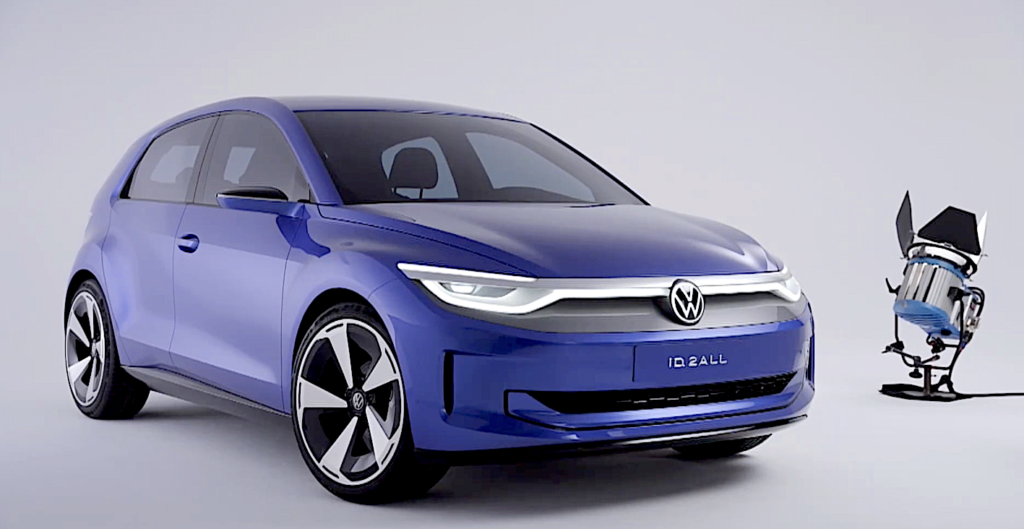
But to avoid any controversy, Volkswagen announces from the outset that “Andreas Mindt has Volkswagen in his blood, as his father was a designer in Wolfsburg before him. Andreas Mindt joined Volkswagen in 1996 after studying design. He created bestsellers such as the first Tiguan and the seventh generation Golf. In 2014, he joined Audi in Ingolstadt as head of exterior design. In 2021, he became design director at Bentley in Crewe, England.”

And to prove that the new design boss is indeed a VW addict, he points out that he is the proud owner of a Beetle. For Andreas Mindt, the objective is the same as those who have experienced the same promotion at the head of a design centre: “We transfer the DNA of our icons into our future products. THE ID. 2all is therefore also a tribute to the Beetle, the Golf and the Polo. Nothing less than the three legendary models (especially the first two…) of the German brand! (above)
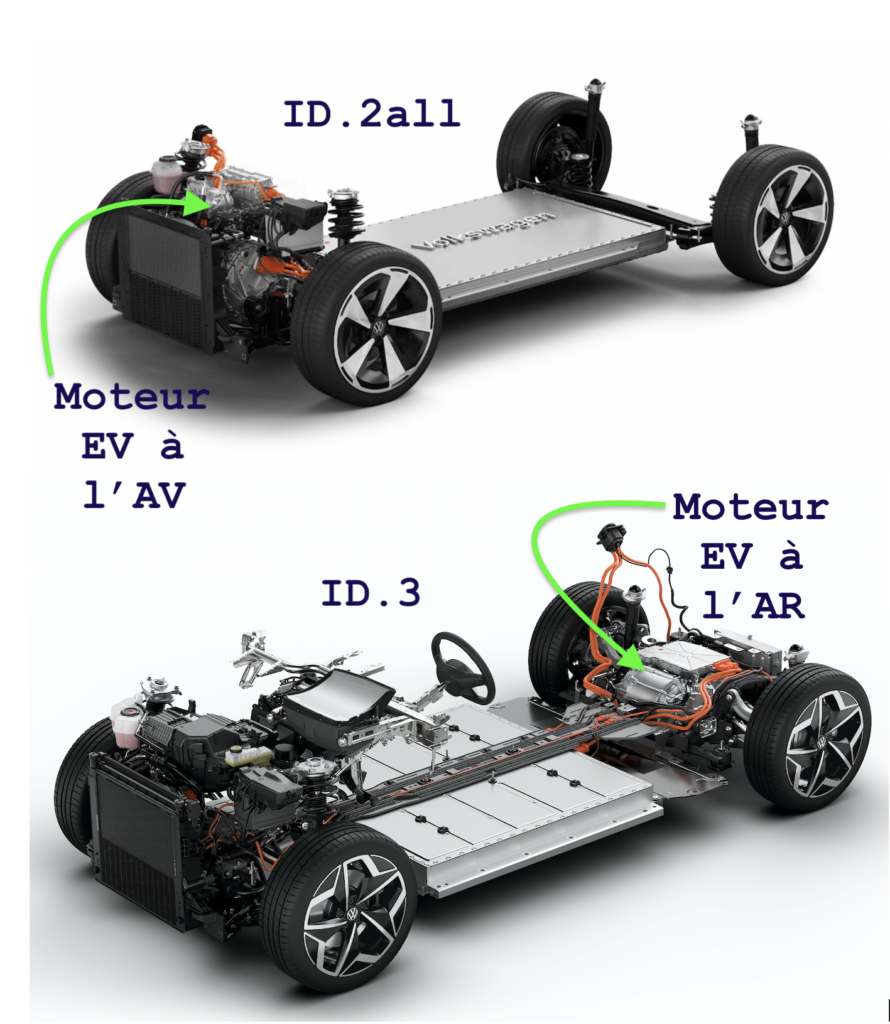
To cut a long story short, the ID.2all is a compact car about the same size as a Polo, with the space of a Golf. It is 100% electric and has front-wheel drive. It inaugurates the ‘Entry’ version of the MEB platform. And it has to be said that this 100% powertrain with a motor positioned at the front this time, and not at the rear as on the ID3 and ID4/5, is a solution that seems obvious.
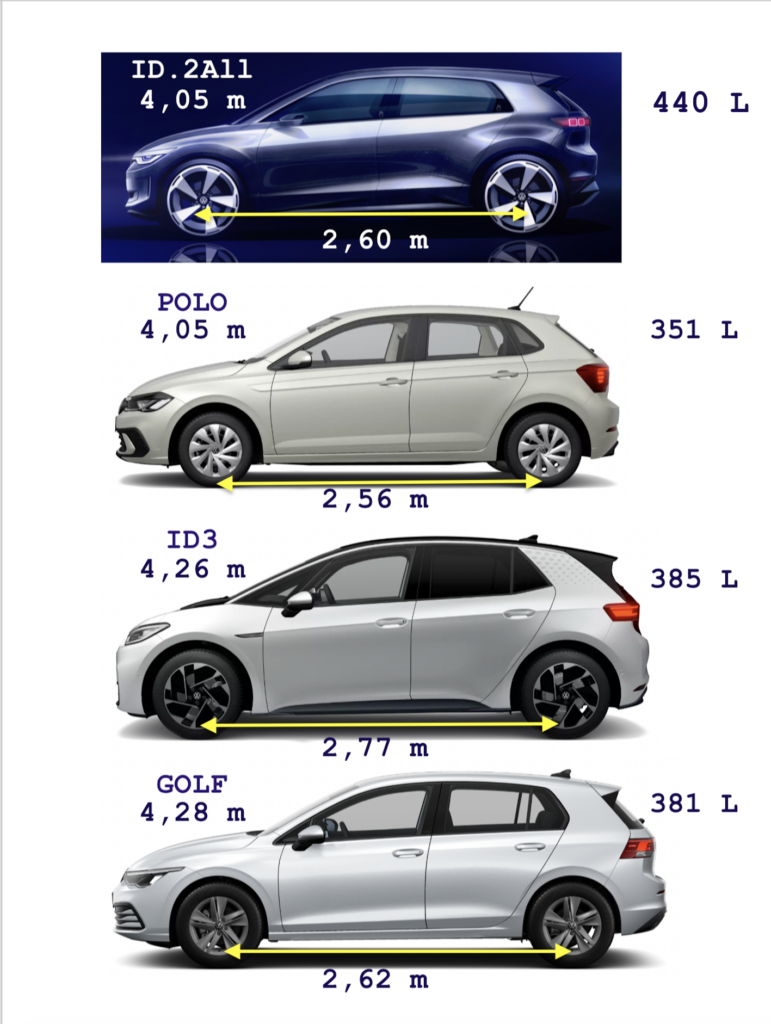
We still don’t understand why Volkswagen positioned its motor at the rear of its first SEM. In the ID.2all, the electric motor is moved to the front, leaving the rear axle completely free. The result? The boot of this compact car is announced at 440 litres (+ 50 litres under the folding bench seat to house the charging cable) compared to 351 litres for its combustion engine sister Polo, which shares an identical length with the newcomer: 4.05 metres.
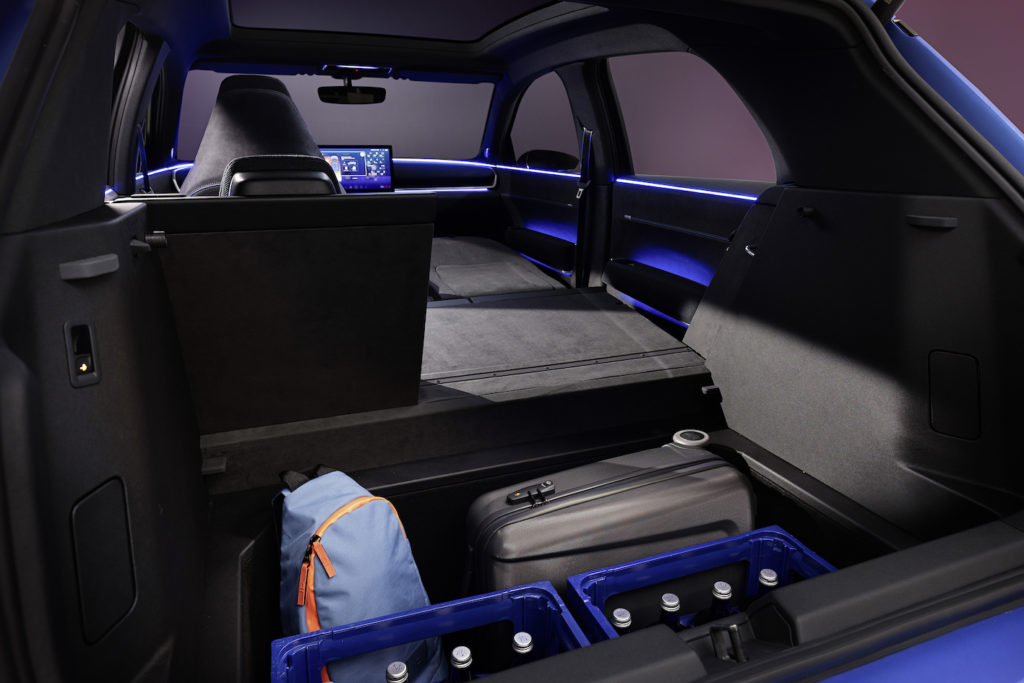
With this future Volkswagen, which aims to be marketed at less than €25,000 (i.e. a direct rival to the future Renault 5), Andreas Mindt is unveiling the new formal language of the brand’s future. Mindt admits to relying on three essential themes in VW’s styling DNA: “stability, sympathy and enthusiasm.” A theme that should be found on the 10 new electric models that the manufacturer will present between now and 2026.
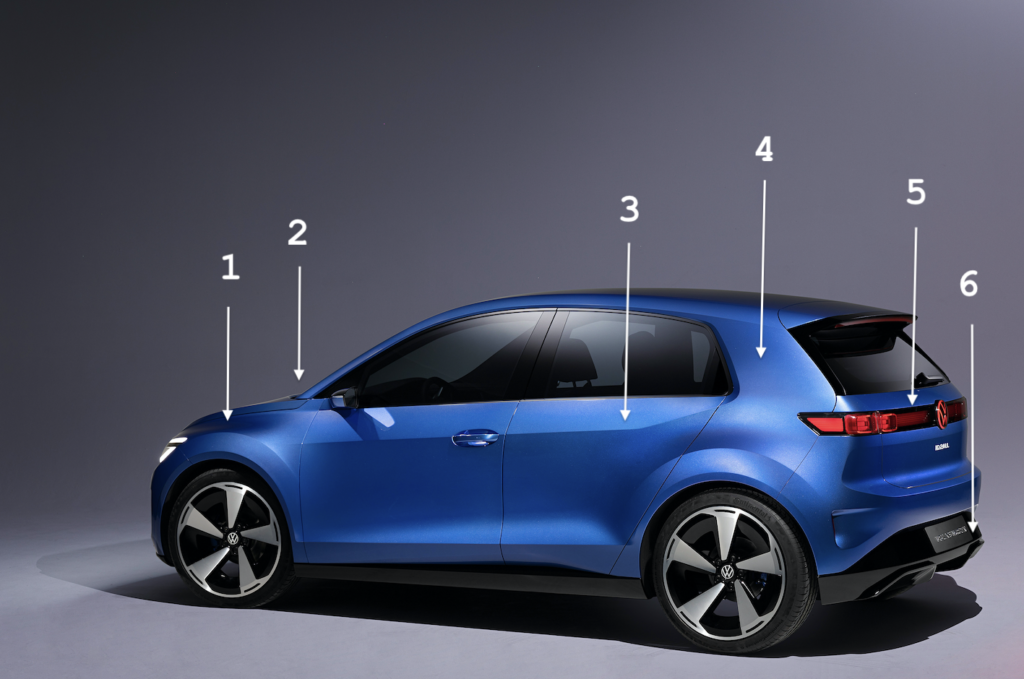
Thus, the Volkswagen design of the current IDs is completely reconsidered. From the utopia of a style dedicated to electric vehicles with a pseudo-monocorps architecture, VW switches to a much more conventional universe, with the return of an engine bonnet (which is justified by the presence of the engine) and above all, the return of the “C” pillar designed by Giugiaro on the very first Golf.
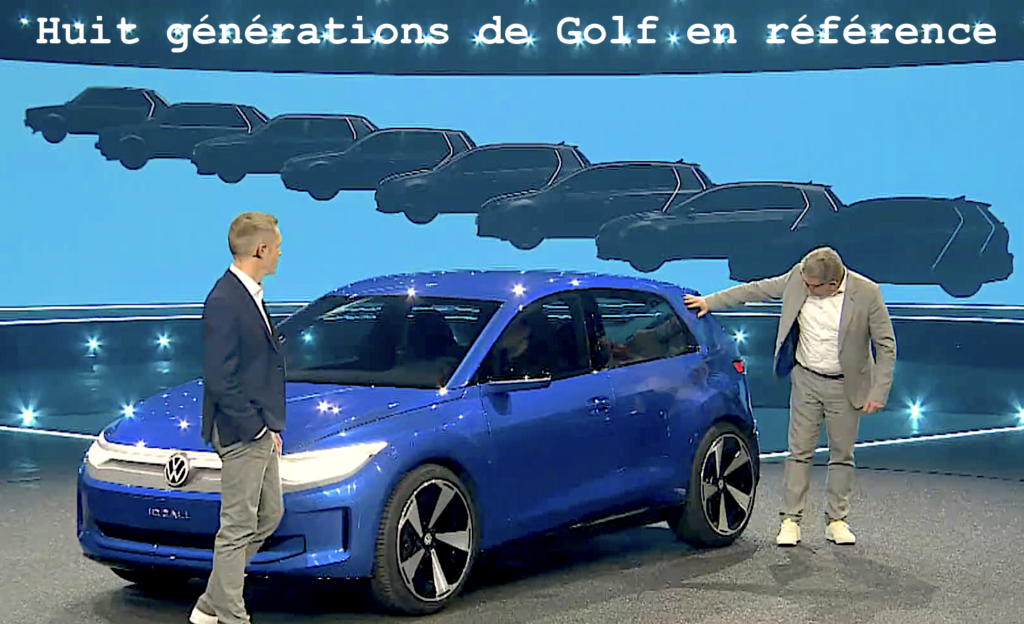
The style codes of this new ID.2all are almost confusingly classic! To reinforce this idea of “stability”, the rear pillar is supported by body-built wings and an edge line that plunges from this C-pillar towards the equally muscular front wing. The result is a wing design with a flat front end that is reminiscent of a Tesla design! THE ID. 2all is the first Volkswagen to feature this new C-pillar signature. Andreas Mindt explains, “The C-pillar is the backbone of the Volkswagen design. It is integrated into the side contour of the body and thus creates a completely new, but still typical Volkswagen design. This design deliberately dispenses with shoulders. Except on the front wings.
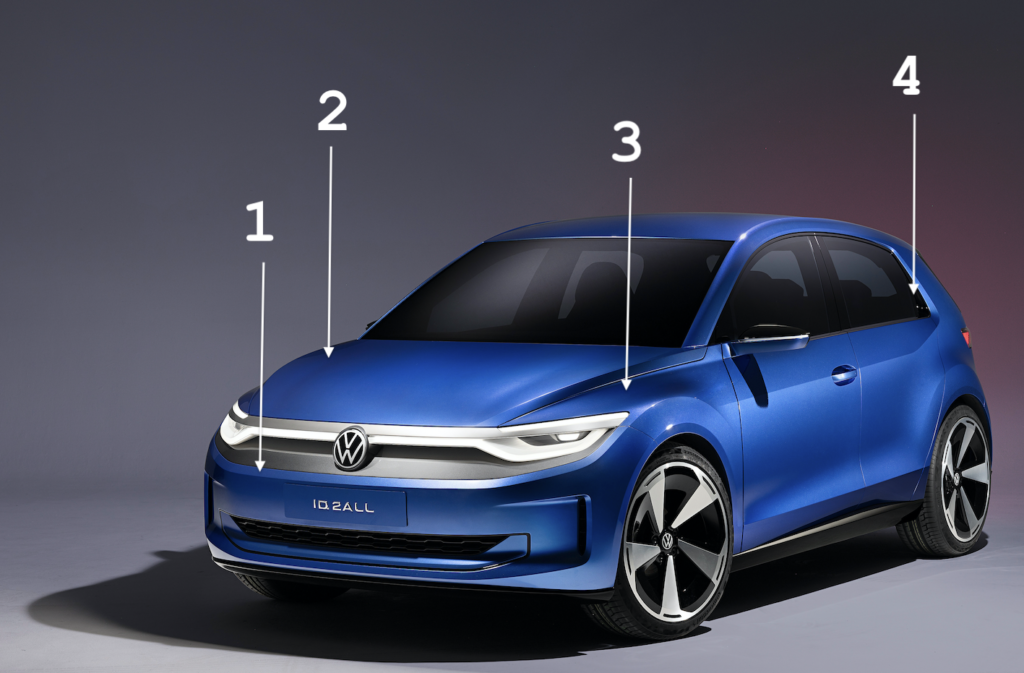
But a new design language, even if it is strongly inspired by the classicism that has prevailed for eight generations of Golf, is not just about lines and volumes. “We also want to inspire our customers. For example, with increased dynamics, improved operability or the classic ‘form follows function’ seen on the ID. Buzz or a Golf.”
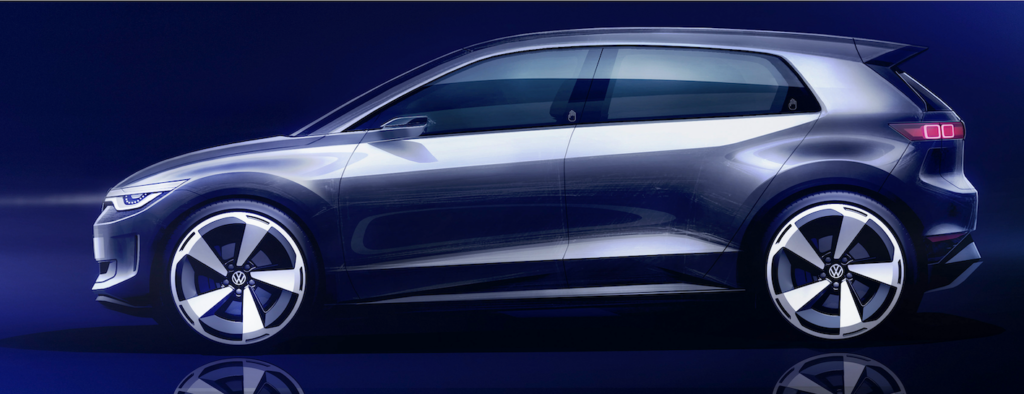
We appreciate the treatment of the “Golf/Polo” codes in this concept, but we are surprised by the total absence of conceptual audacity. Is it that the ID3, which sits alongside the Golf and Beetle in the history of Volkswagen design, has not taken enough care with its style to be so quickly disdained?
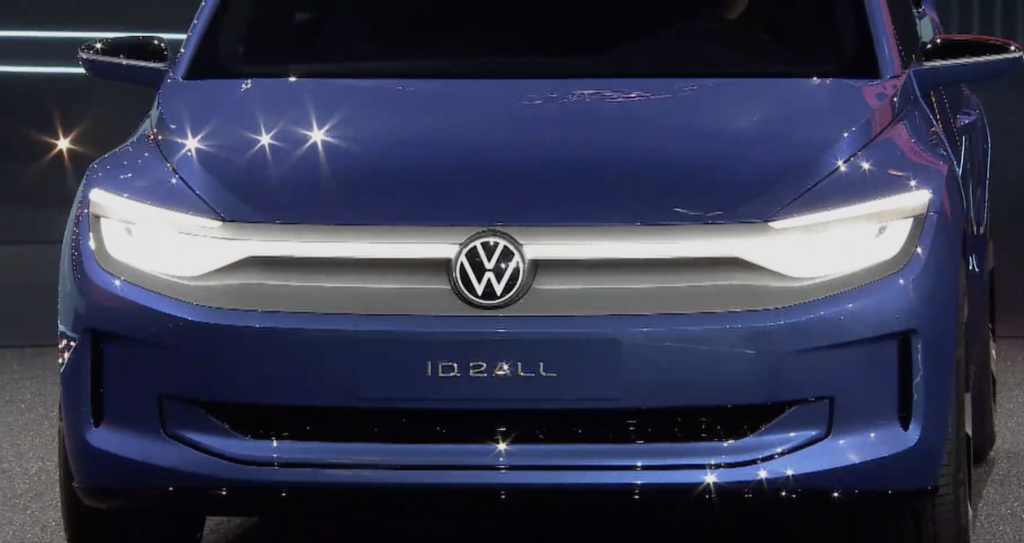
Finally, the design of this ID.2all plays on some very obvious themes: “the volume above the wheels must be reduced so that the vehicle feels stable on the road. This is the case with the ID.2all. 2all. And many other models with successful proportions. Fortunately, there are some!
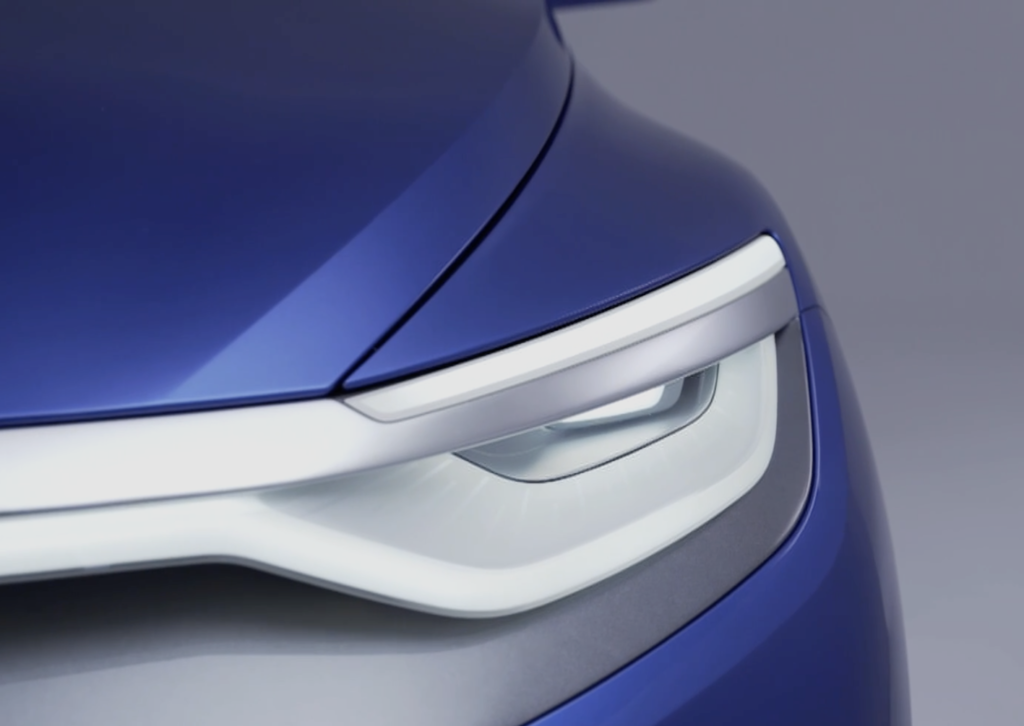
Volkswagen defends its design by explaining that it even uses the golden ratio. “The sympathy of our design is created by the golden ratio. It is simply the ratio of 3/5ths to 2/5ths. Leonardo da Vinci had already followed this geometric principle in works such as the Mona Lisa. The characteristic line running under the shoulder of the window lies exactly on the golden ratio line of the ID. 2all. The Beetle and the Golf have also always followed the golden ratio principle.
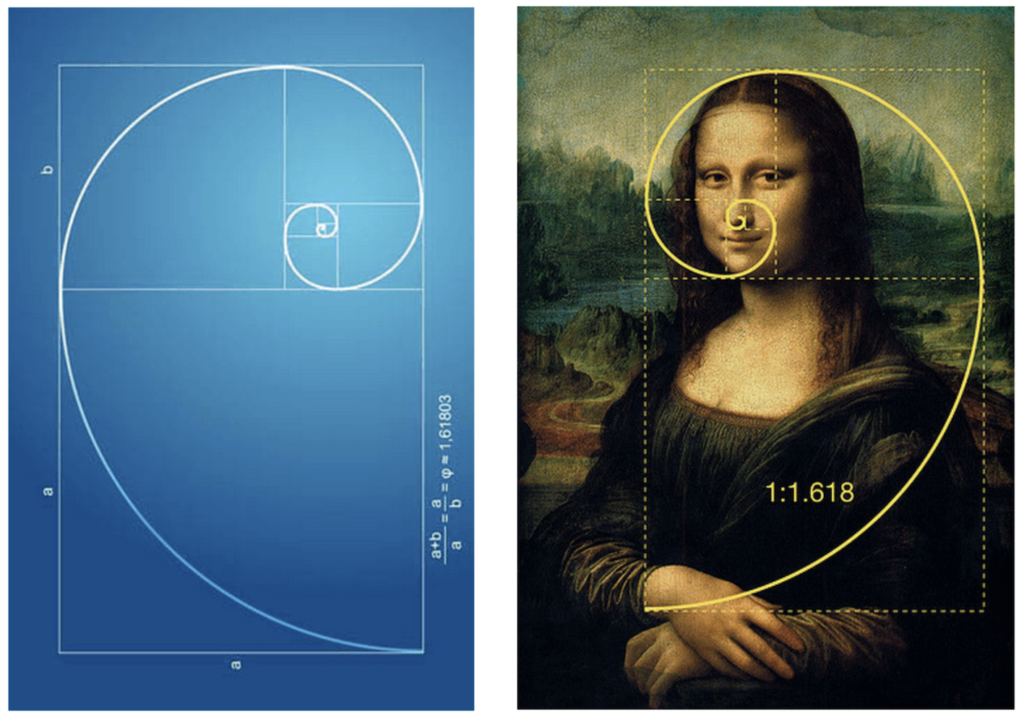
The golden ratio was discovered in ancient times and is defined by the Greek letter “Phi” and has a value of 1.618033…. It is the little brother of the number 3.141592… referenced by the other Greek letter Pi. The golden ratio can be explained by a simple rectangle whose long side is 1.618033… times the short side. This visual harmony can be seen in the work of the architect Le Corbusier, such as the famous Villa Savoye (below with a Voisin C14. Photo Xavier de Nombel)

So, after the return to a very classic design, Volkswagen is having fun telling us the story of a number from antiquity, when its main rivals are aiming to revolutionise the interior architecture and design of the cars of 2030. One step forward with an engine that is finally well positioned, two steps back with a clean but unadventurous design. In fact, Volkswagen has become Volkswagen again. Some might consider this a compliment.
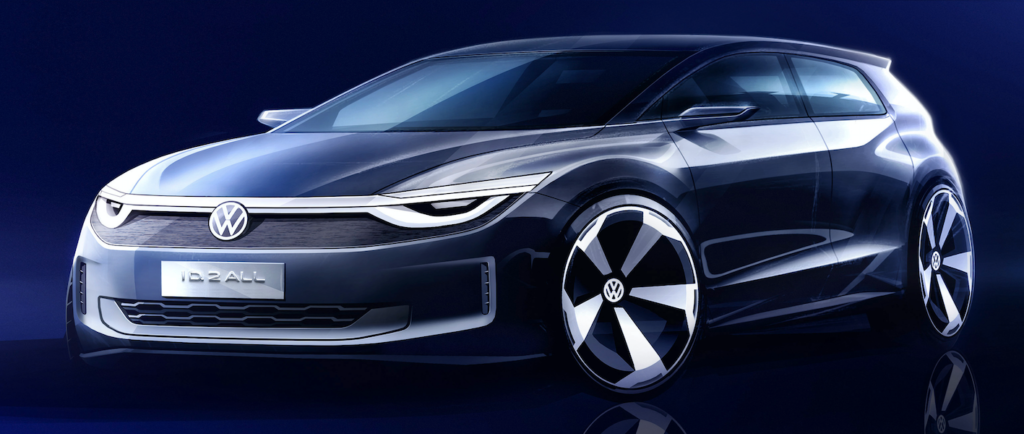
With its ID. 2all, Volkswagen plans to develop a fairly wide range. The first model is announced by the manufacturer “at less than €25,000” but others will follow. “The VW ID. 2all is designed in such a way that a sporty model is also easily conceivable on its basis.
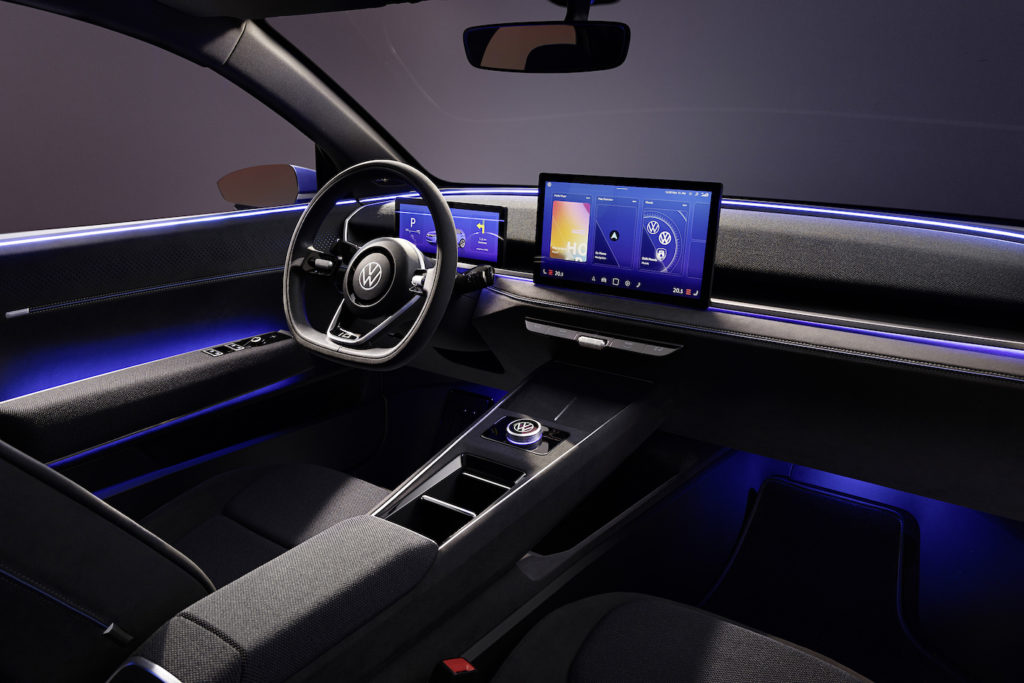
On board, there is quite a gap in terms of design and materials compared to the ID3. The concept gets a “driving mode selector switch on the centre console that is made of a high-quality material and allows precise operation. This is a detail that one would not normally expect from a vehicle in this price category.”
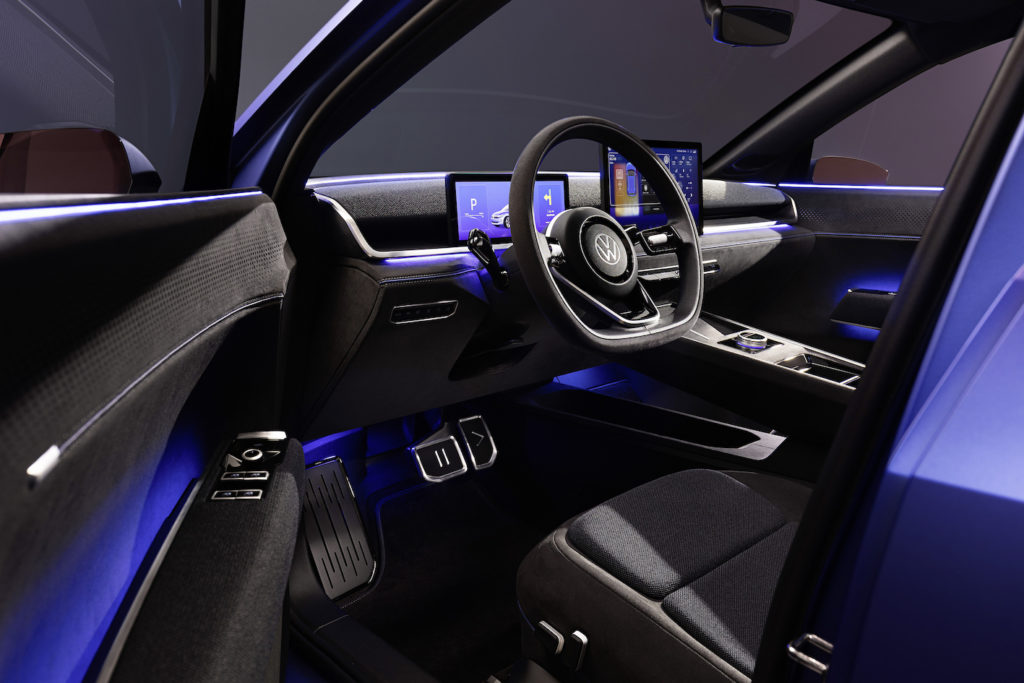
The interior is designed for five people, with a large boot as mentioned above. THE ID. 2all is in fact the specification of a 1974 Golf, slightly shorter than the concept! The digital instrumentation allows you to choose a graphic design close to those found in the mid 1970s on board the Polo and Golf. Nice!
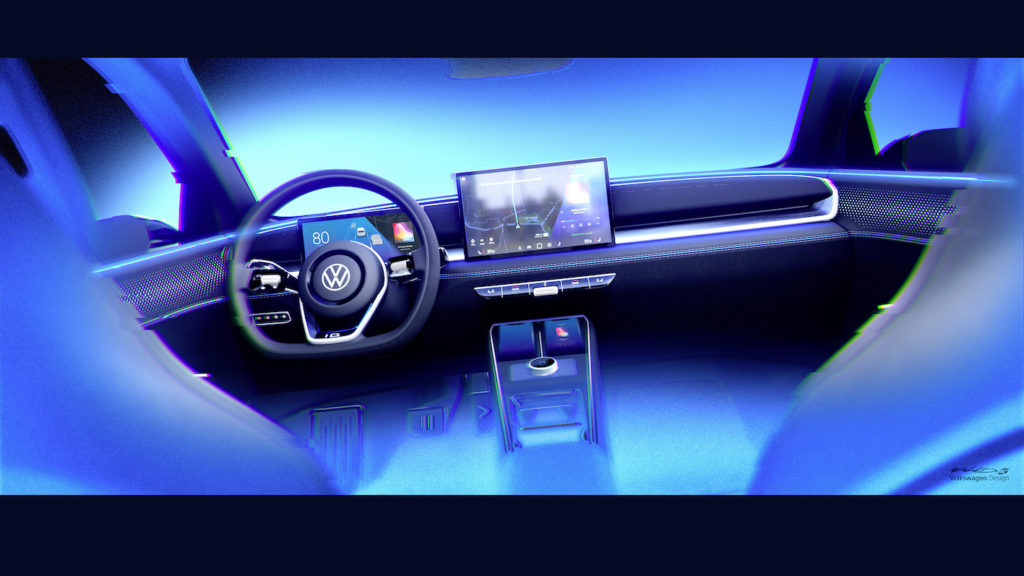
Volkswagen explains that the production volumes of the MEB platform (of which the MEB Entry is a part) will make it possible to offer equipment on this type of B-segment vehicle that was previously reserved for higher categories. Thus, the ID. 2all will be equipped with the latest version of Travel Assist – a system for partially automated driving – IQ.LIGHT lighting – LED headlamps with a matrix beam, 3D LED rear light clusters separated by an LED crossbar, Park Assist Plus with memory function and electrically adjustable seats with massage function. A large panoramic roof should also be offered. With all this, the ID. 2all should be a long way from the promised ‘under €25,000’…
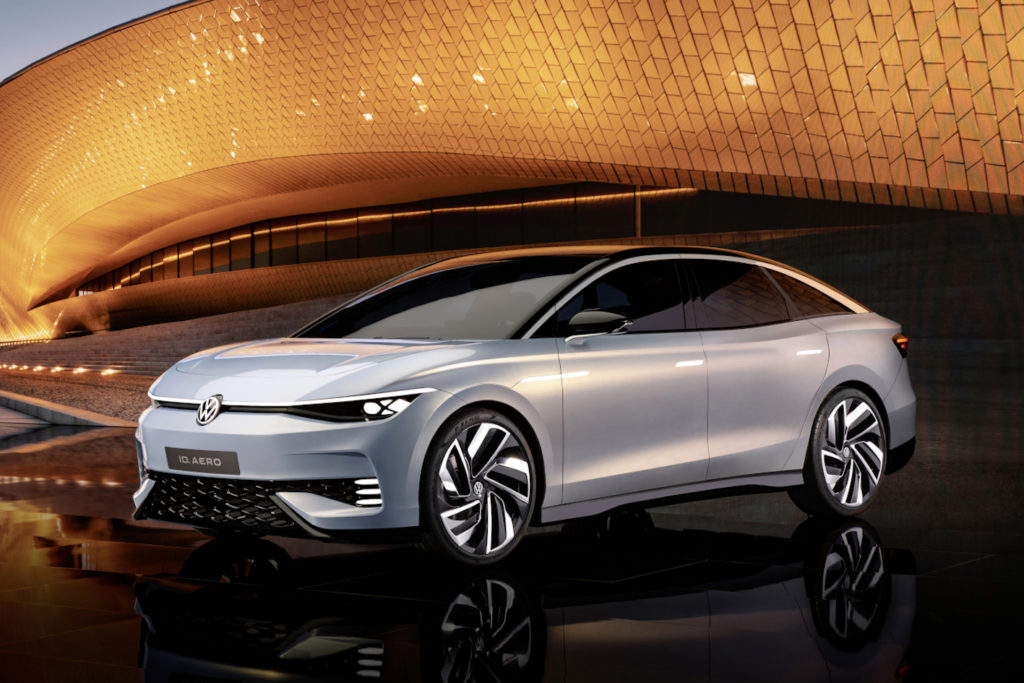
This year, Volkswagen will launch the new ID.3, the long-wheelbase ID. Buzz long wheelbase and the ID.7 saloon. An electric compact SUV is planned for 2026 and, despite all the challenges, VW is preparing an electric car for under €20,000.
SUMMARY: THE VW ID. 2all AND ITS SISTERS
